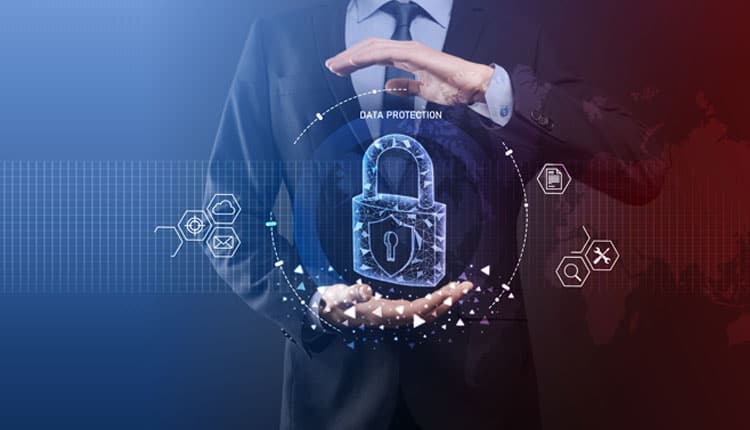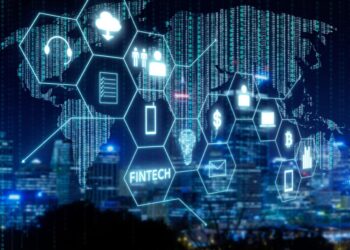The financial services industry, a cornerstone of the global economy, is undergoing a profound digital transformation. With the widespread adoption of online banking, mobile payments, and decentralized finance (DeFi), the sector has become more accessible, efficient, and interconnected than ever before. However, this shift from brick-and-mortar to a digital-first model has also opened the door to a new and formidable set of threats. Cybersecurity in financial services is no longer just a technical issue; it is a critical, existential challenge that requires a multi-layered, proactive defense. The industry has become the primary target for cybercriminals, nation-state actors, and malicious insiders, who see it as a trove of valuable financial data and a primary avenue for illicit gains. This article will provide an in-depth exploration of the evolving cybersecurity landscape in finance, examine the key threats and vulnerabilities, and outline the cutting-edge strategies and technologies that are building a new, more resilient financial ecosystem.
For decades, banks relied on physical security to protect assets. Today, the most valuable assets are digital—customer data, transaction records, and cryptographic keys. The old fortress model of defense is obsolete. The new reality requires a dynamic, intelligent security infrastructure that can identify and neutralize threats in real-time, often before they can cause any damage. The stakes have never been higher. A single successful cyberattack can not only lead to massive financial losses and data breaches but can also erode public trust in the entire financial system. As such, cybersecurity has moved from a back-office function to a core business priority, with a focus on creating a culture of security awareness that permeates every level of an organization.
The Evolving Threat Landscape
The threats facing the financial sector are sophisticated, persistent, and constantly evolving. A static defense is a losing strategy. The most significant risks today are not just about a simple hack; they are about complex, multi-vector attacks designed to exploit a range of vulnerabilities.
- A. Phishing and Social Engineering: Despite the proliferation of advanced security technology, human error remains the single biggest vulnerability. Phishing attacks, which trick employees or customers into revealing sensitive information, are becoming more sophisticated and difficult to detect. Cybercriminals use highly personalized social engineering tactics to gain access to corporate networks, with a single compromised employee acting as a gateway to the entire system.
- B. Ransomware and Extortion: Ransomware attacks have become a multi-billion-dollar industry, with financial institutions being a prime target. An attacker gains access to a network, encrypts critical data, and demands a ransom for its release. Beyond the financial cost of the ransom, these attacks can cause massive operational disruption, data leaks, and reputational damage.
- C. DDoS Attacks: A Distributed Denial-of-Service (DDoS) attack overwhelms a financial institution’s network with a flood of traffic, making its services—like online banking or trading platforms—unavailable to customers. These attacks are often used as a distraction to mask a more serious, simultaneous attempt to breach the network and steal data.
- D. Insider Threats: Not all threats come from outside the organization. Disgruntled employees, or those who have been compromised, can use their legitimate access to steal data, disrupt operations, or introduce malware into the system. Insider threats are particularly difficult to detect, as they often bypass external security controls.
- E. The Risks of Third-Party Vendors: The financial industry relies on a complex network of third-party vendors for everything from software development to data processing. A security breach at a single, less-protected vendor can expose the data of a major bank and its customers, as seen in numerous high-profile cyberattacks. Managing this supply chain risk is a critical challenge.

Building a Resilient Defense Strategy
To combat these threats, financial institutions are adopting a multi-layered, proactive approach to cybersecurity. This isn’t just about putting up a firewall; it’s about building a living, breathing security ecosystem that is constantly learning and adapting.
I. The Technological Frontline
- A. AI-Powered Threat Detection: The volume and speed of modern cyberattacks make manual threat detection impossible. Financial firms are now using artificial intelligence and machine learning to analyze vast amounts of data in real-time, identifying unusual patterns of behavior that might indicate a breach. An AI model can spot a fraudulent transaction or an attempted network intrusion and flag it for review in milliseconds, a speed that a human analyst cannot match.
- B. Behavioral Biometrics: Beyond traditional biometrics like fingerprints, financial institutions are using behavioral biometrics to continuously verify a user’s identity. This technology analyzes a user’s unique patterns of behavior—such as their typing rhythm, mouse movements, or the way they hold their phone—to detect if an unauthorized user is attempting to access an account, even if they have the correct password.
- C. Zero-Trust Architecture: The traditional security model assumes that everyone inside a network can be trusted. A “zero-trust” model assumes the opposite. It requires that every user and every device, regardless of whether they are inside or outside the network, must be verified before gaining access to any system. This micro-segmentation of the network makes it significantly harder for an attacker to move laterally once they gain an initial foothold.
- D. Blockchain and Decentralized Identity: Blockchain technology, with its immutable and distributed ledger, is being explored to create a new, more secure model for identity management. A decentralized identity would allow an individual to securely store and share their identity information without relying on a single, centralized authority, reducing the risk of a massive data breach.
II. The Human and Procedural Element
- A. Continuous Employee Training: A strong security culture starts with the employees. Financial institutions are implementing regular, mandatory cybersecurity training to teach employees how to spot phishing emails, use secure passwords, and report suspicious activity. This continuous education is the first line of defense against social engineering and insider threats.
- B. The CISO’s Evolving Role: The Chief Information Security Officer (CISO) is no longer just a technical expert. They are now a strategic leader who reports directly to the C-suite and the board. Their role is to not only manage the company’s cybersecurity strategy but also to communicate the risks and opportunities to the entire organization, ensuring that security is a part of every business decision.
- C. Incident Response Planning: A well-defined incident response plan is critical for minimizing the damage from a successful attack. This plan outlines the steps an organization will take in the event of a breach, from isolating the affected systems and notifying regulators to communicating with the public and restoring operations. A fast and effective response can be the difference between a minor inconvenience and a catastrophic failure.
- D. Collaboration and Information Sharing: The financial services industry is increasingly working together to combat cyber threats. This includes sharing threat intelligence, best practices, and lessons learned from past attacks. By collaborating, institutions can build a collective defense that is more resilient than a fragmented, siloed approach.
The Future of Financial Cybersecurity
The future of cybersecurity in financial services is a continuous, dynamic arms race. As attackers develop new tools and techniques, so must the industry’s defense strategies. The integration of artificial intelligence, machine learning, and behavioral analytics will make security more proactive and predictive, allowing institutions to stop attacks before they even start. The move toward zero-trust architecture and decentralized systems will make networks more resilient to breaches. However, the most crucial element will always be the human one.
The ultimate goal is to create a financial ecosystem where cybersecurity is not an afterthought but is baked into the very design of every product and service. This “security by design” philosophy will build a new level of trust and confidence, not just among consumers but also among regulators and governments. The digital transformation of finance has brought with it incredible benefits, and by prioritizing cybersecurity, the industry can ensure that this revolution is not only efficient and accessible but also safe and secure for everyone.













